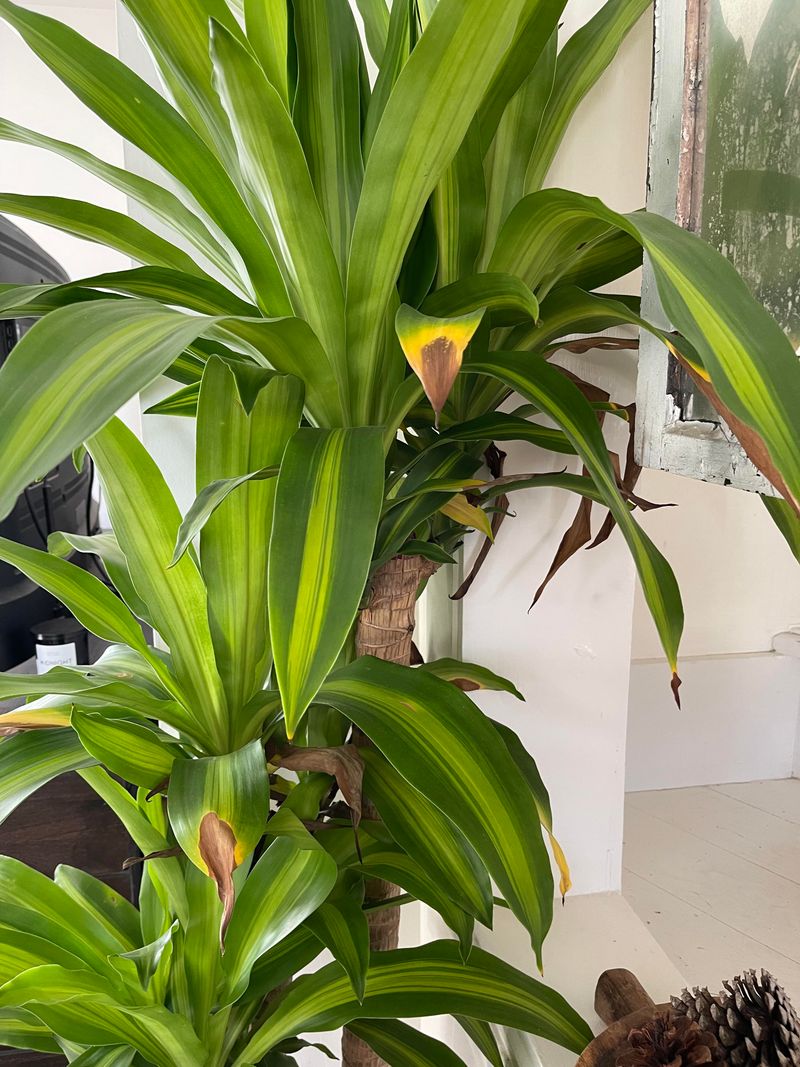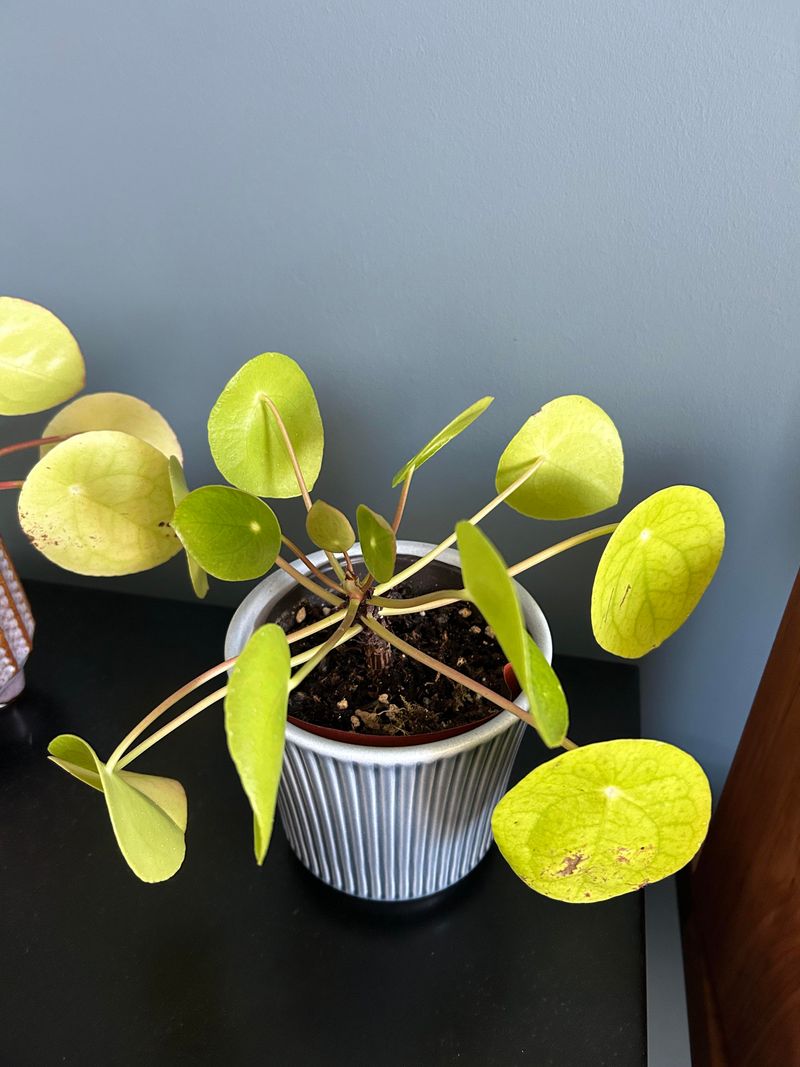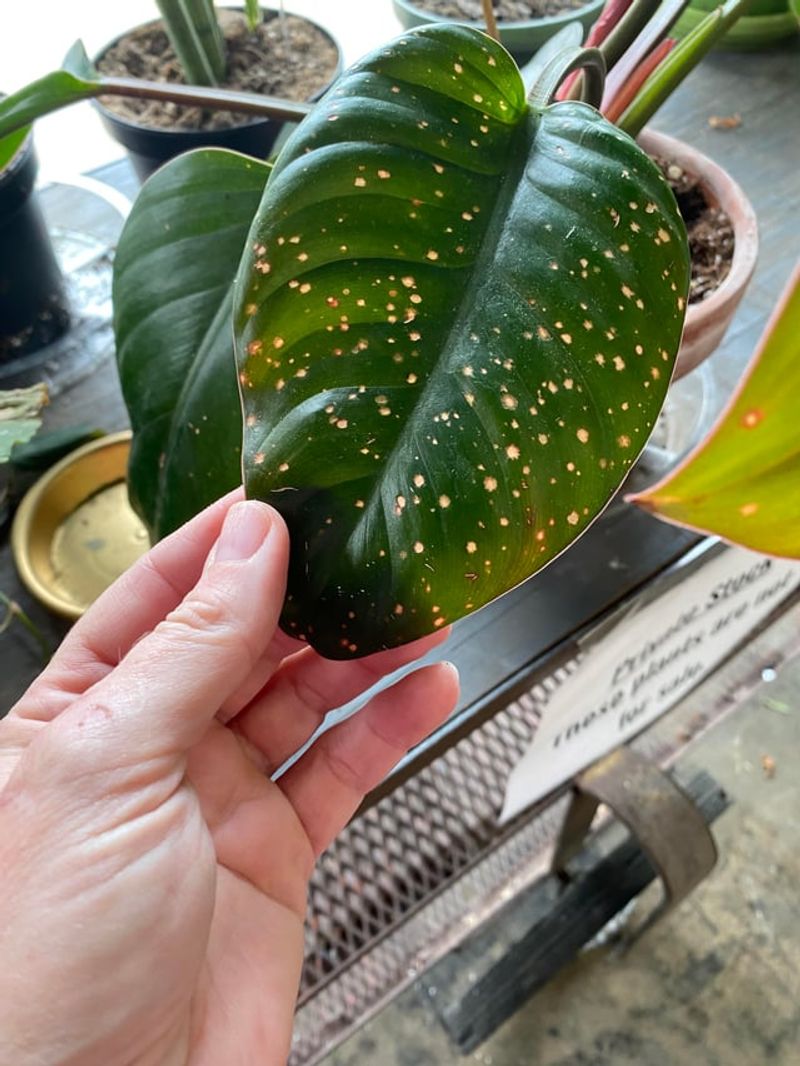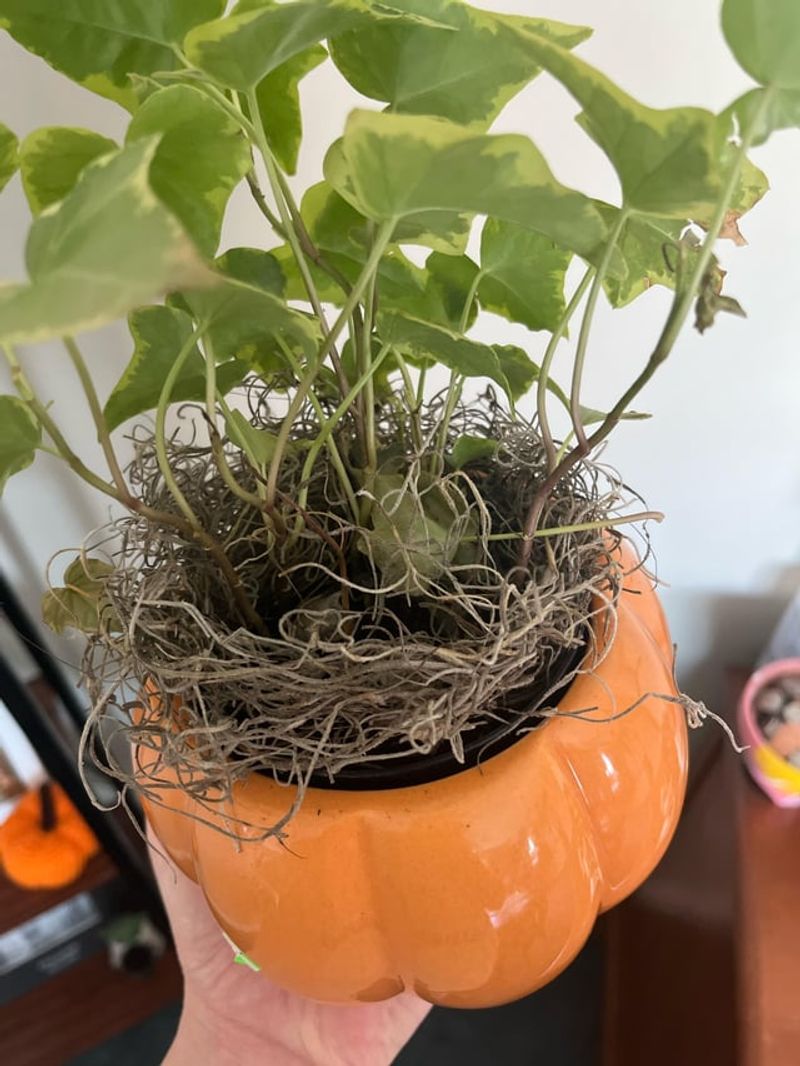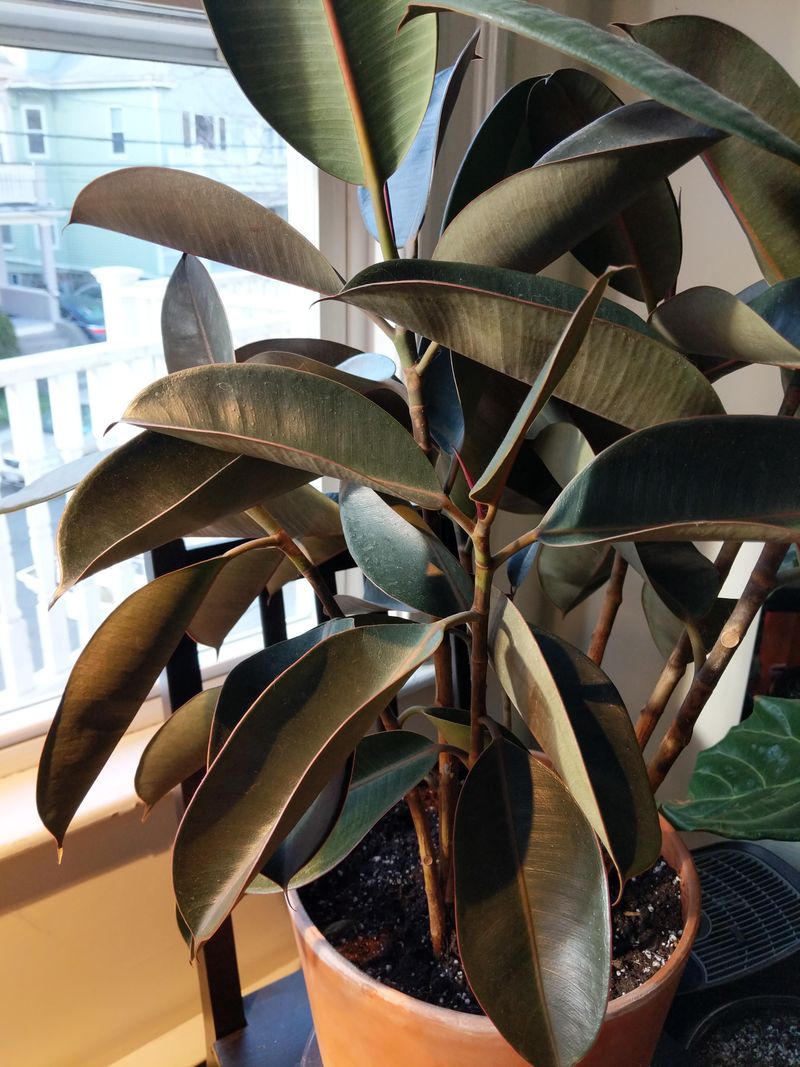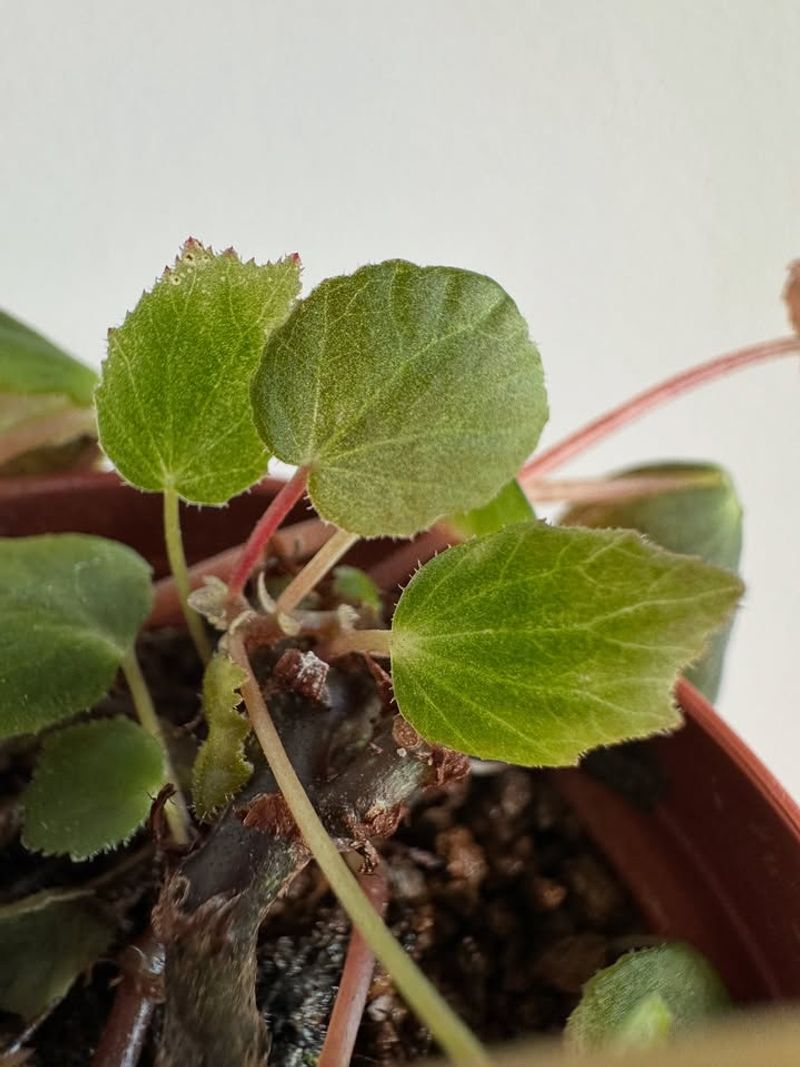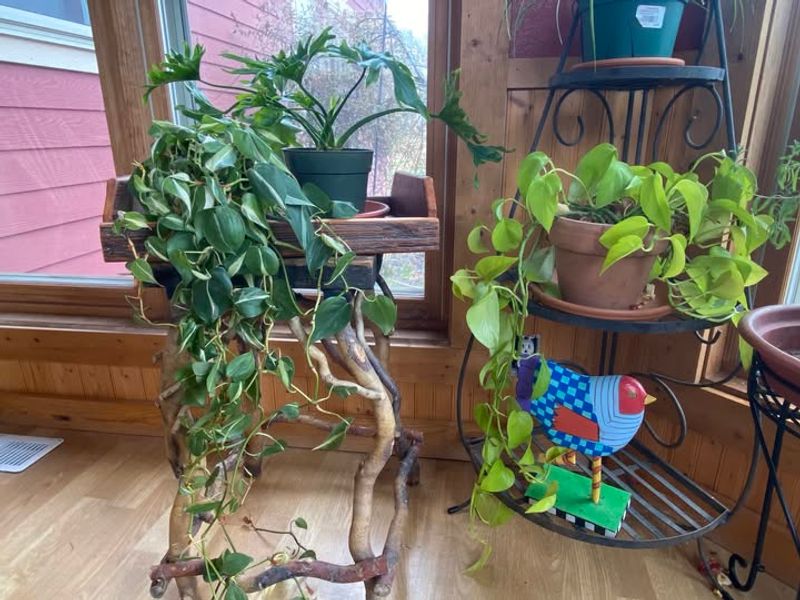I stood by the window one afternoon and felt my stomach drop. The leaves closest to the glass looked bleached, crisp, and tired, as if the sun had picked a fight and won. I always chased bright light for my plants, but this sight told a different story.
The glass acted like a spotlight, and my poor houseplants paid the price. That moment opened my eyes to how fast a sunny perch can turn into trouble, and I knew I had to move them before more damage took hold.
1. Brown, Crispy Leaf Edges Appeared Out Of Nowhere
One morning I walked past my plants and noticed the edges looked toasted. Like someone had taken a lighter to them. It wasn’t bugs or underwatering because the soil was still moist.
Those brown, papery edges are a classic sign of sun scorch. When leaves get too much direct sun, they literally burn. Move your plant back a few feet from the window or add a sheer curtain to filter the light and protect those delicate leaves.
2. Faded, Washed-Out Leaves Started Looking Pale
My monstera used to have these deep, gorgeous green leaves. Then they started looking kind of bleached out and dull. I thought maybe it needed fertilizer, but that wasn’t the issue at all.
Intense sunlight can actually fade the chlorophyll in leaves, making them look pale and washed out. If your plant’s color is disappearing, try relocating it to a spot with bright but indirect light. You’ll see the rich color return over time with new growth.
3. Leaves Developed Weird Yellow Or White Spots
Random spots started popping up on my snake plant leaves. They were sort of yellowish-white and looked almost like little burn marks. I panicked thinking it was some plant disease spreading fast.
Nope, just sunburn. When intense rays hit the same spot repeatedly, it creates these discolored patches. The tissue gets damaged and can’t recover. Shield your plants with a light curtain or rotate them regularly so all sides get even, gentler light exposure.
4. The Soil Dried Out Way Too Fast Every Single Day
I was watering my plants constantly because the soil kept drying out super quickly. It felt like I couldn’t keep up. That’s when I realized the hot sun was baking the pot all day long.
Direct sun doesn’t just affect leaves, it heats up the entire pot and dries soil rapidly. This stresses roots and makes watering schedules unpredictable. Moving your plant away from that intense heat will help the soil retain moisture better and keep your plant happier overall.
5. Leaves Started Curling Inward To Protect Themselves
My calathea’s leaves began curling up like little tacos. At first I thought it was thirsty, but even after watering, the curling continued. Plants are smarter than we think sometimes.
Curling is a defense mechanism against harsh light. Leaves fold inward to reduce the surface area exposed to burning rays. If you notice this happening, it’s your plant’s way of crying for help. Give it some shade and watch those leaves relax and unfold again.
6. New Growth Came In Stunted And Small
For weeks, my philodendron wasn’t putting out normal-sized leaves. The new ones were tiny and looked weak compared to the older growth. I couldn’t figure out why it suddenly stopped thriving like before.
Excessive sun stress can slow down healthy growth patterns. The plant puts all its energy into surviving rather than developing properly. Once I moved it to a gentler spot with filtered light, the new leaves started coming in fuller and healthier again.
7. The Leaves Felt Hot To The Touch During The Day
This one seems obvious now, but I actually touched my plant’s leaves one afternoon and they felt warm. Not room temperature, but genuinely warm like they’d been sitting in the sun. That was my lightbulb moment for sure.
If your plant’s foliage feels hot, it’s definitely getting too much direct exposure. That heat buildup damages cells and causes all those other symptoms. A simple touch test can help you figure out if relocation is needed before serious damage happens.


